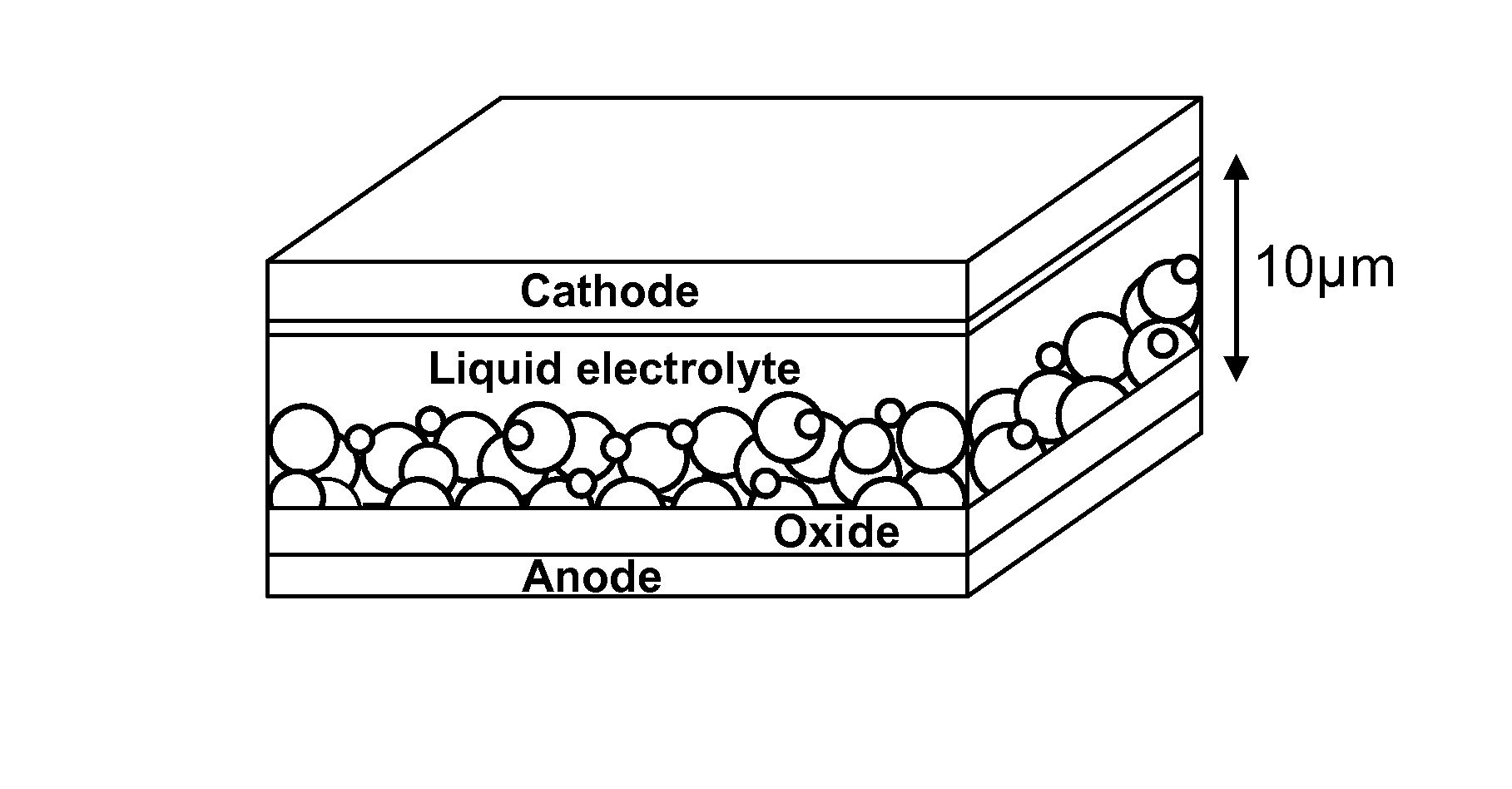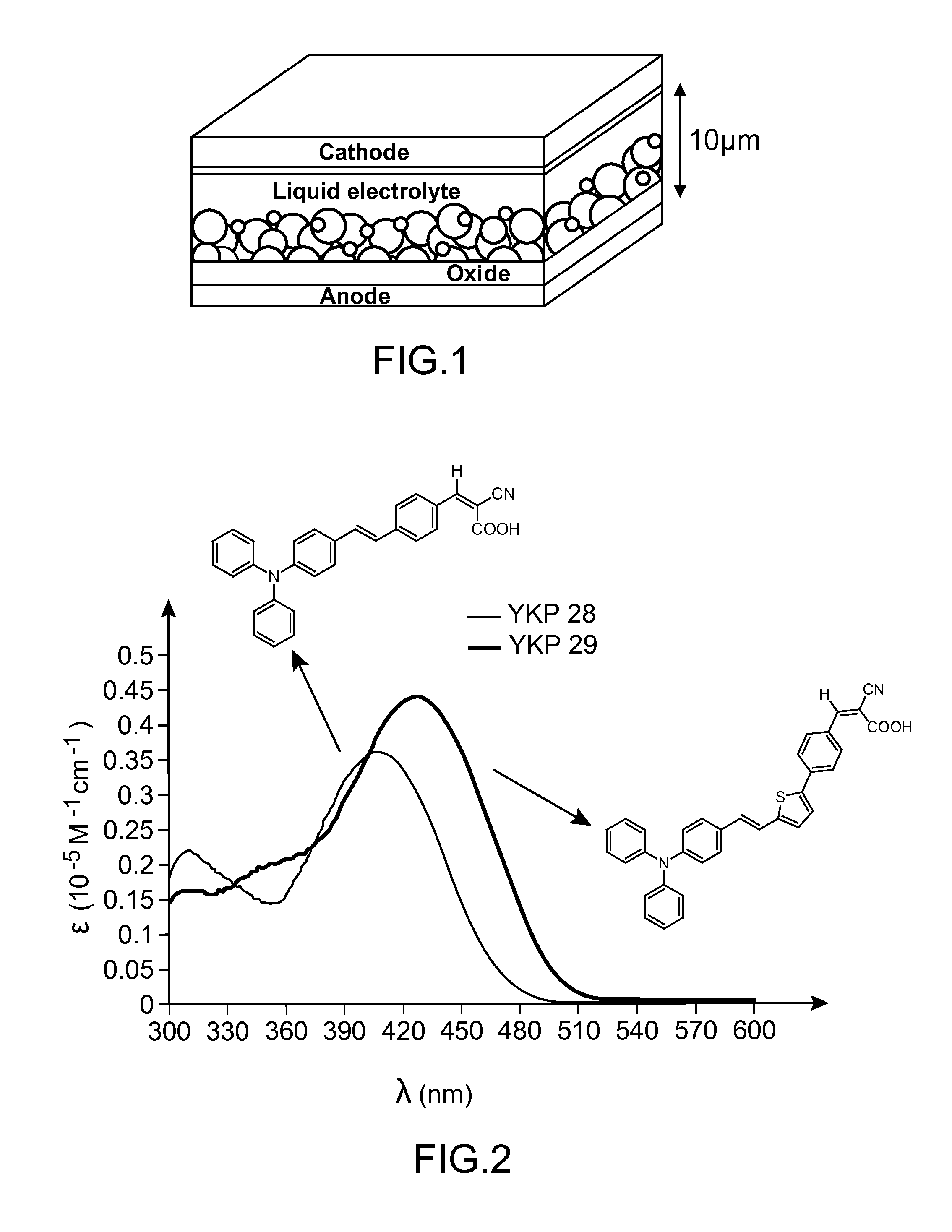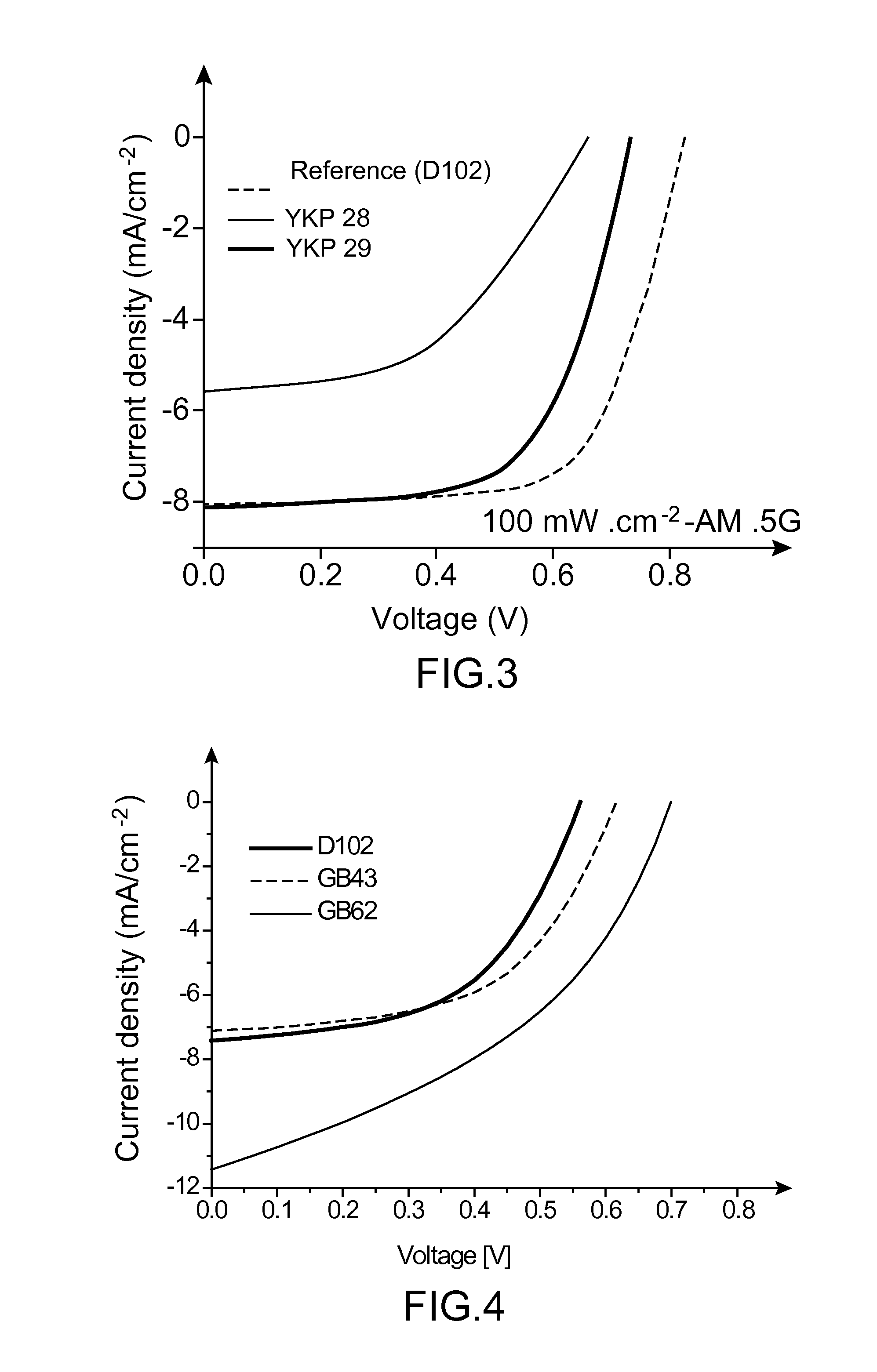Organic colourant and uses thereof in photovoltaic cells
- Summary
- Abstract
- Description
- Claims
- Application Information
AI Technical Summary
Benefits of technology
Problems solved by technology
Method used
Image
Examples
Embodiment Construction
[0025]The present invention makes it possible to resolve all or part of the technical problems listed above.
[0026]Indeed, the work of the inventors has made it possible to synthesise novel organic colorants and, more particularly, pi-conjugated chromophores comprised therein having associations of particular functional groups such as thiophenes, selenophenes and furans. Such colorants used as photosensitizers in metal oxide based photovoltaic devices make it possible (i) to shift into the visible part of the solar spectrum the maximum absorption band (λmax), (ii) to increase in a significant manner the molar absorption coefficient and (iii) to improve the photovoltaic conversion outputs.
[0027]Thus, the present invention relates to an organic colorant corresponding to one of the following structures (I) or (II):
eD-pi-conjugated chromophore-L-A (I)
A-L-pi-conjugated chromophore-eD (II)
[0028]where[0029]eD represents an electron donor segment,[0030]L represents a covalent bond or a spa...
PUM
 Login to View More
Login to View More Abstract
Description
Claims
Application Information
 Login to View More
Login to View More - R&D
- Intellectual Property
- Life Sciences
- Materials
- Tech Scout
- Unparalleled Data Quality
- Higher Quality Content
- 60% Fewer Hallucinations
Browse by: Latest US Patents, China's latest patents, Technical Efficacy Thesaurus, Application Domain, Technology Topic, Popular Technical Reports.
© 2025 PatSnap. All rights reserved.Legal|Privacy policy|Modern Slavery Act Transparency Statement|Sitemap|About US| Contact US: help@patsnap.com



